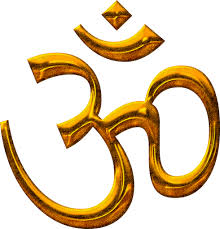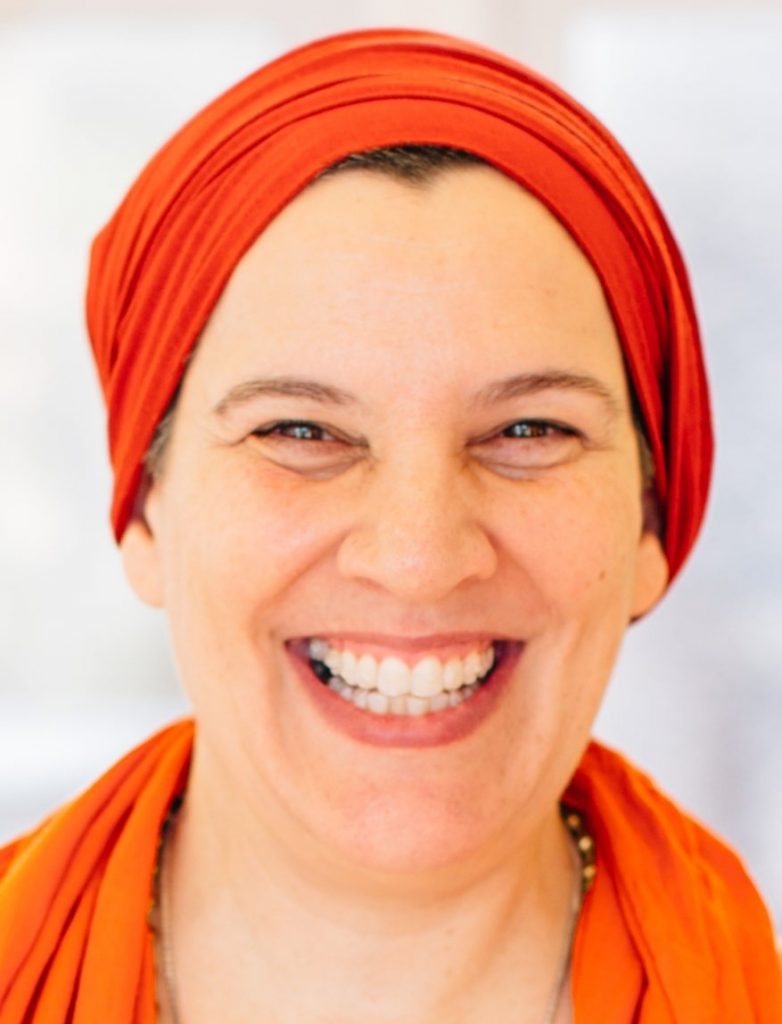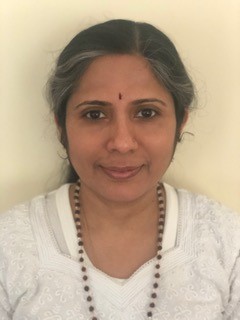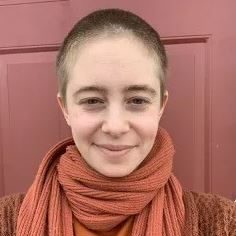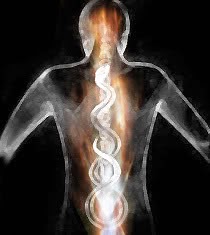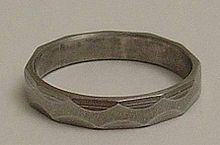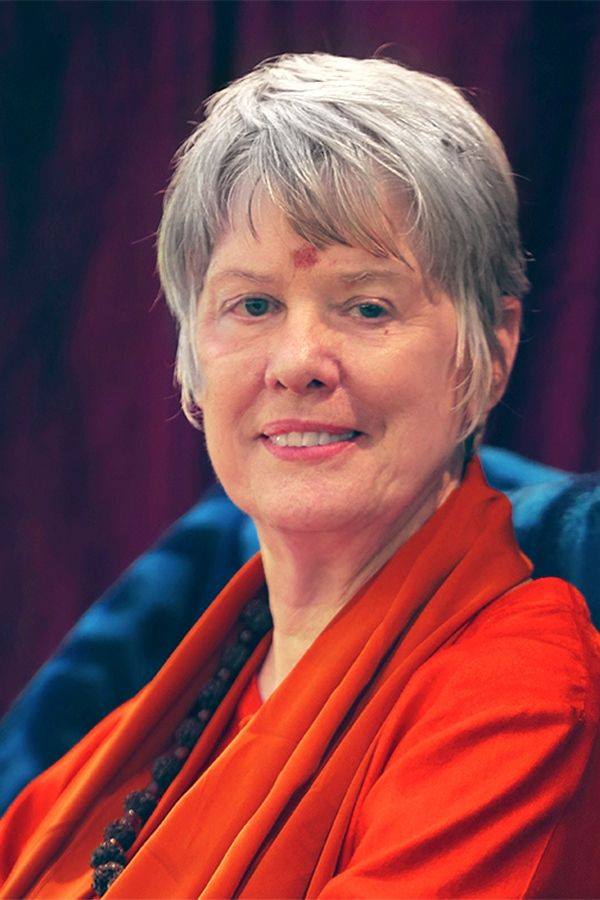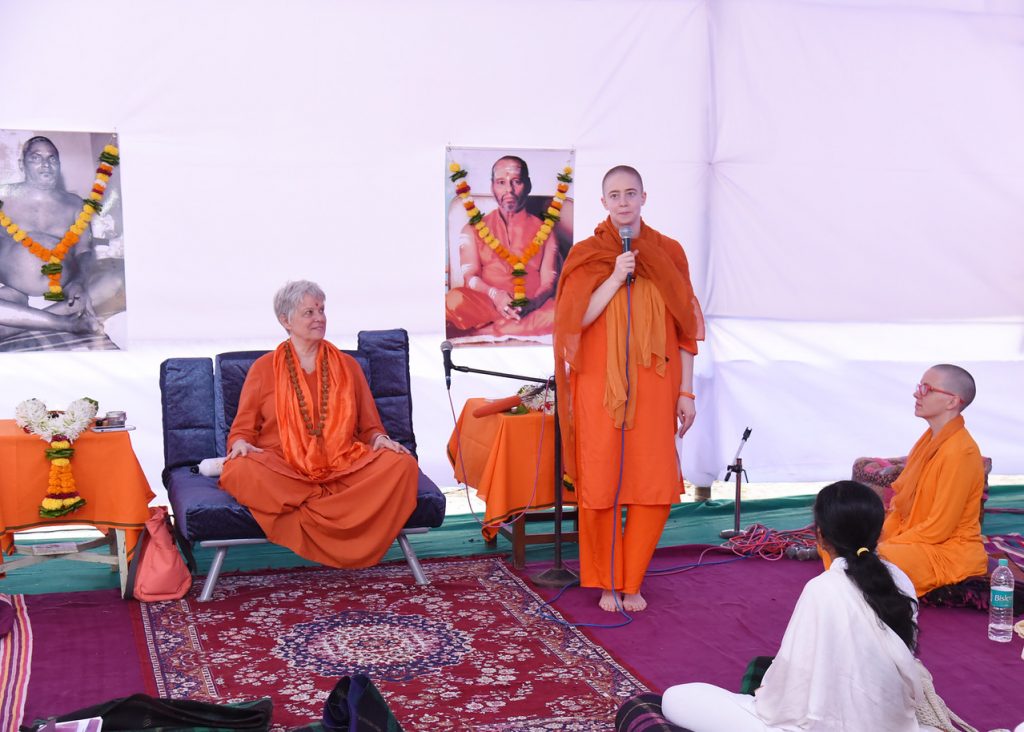By Swami Shrutananda
People ask me, “What are you up to?” I say, “Nothing”. Every day is the same. I have become boring! This monotony is not just due to the pandemic. I blame Swami Nirmalananda (Gurudevi), our Master Teacher, for my boredom and for me being boring.
For us Ashram residents, she has created a repetitive daily practice. We start a chant at 5:15 am six days a week and meditate every day at 6:30 am. We have breakfast with the same people, and then do seva (selfless service). We have lunch with the same people, and then do more seva. In the evening, we gather for a reading, chant, and meditation. Every single day is the same — day in and day out.
My mind has had nowhere to go except inward. When I was first beginning to look inward, I bumped into what my mind found important and interesting — but was not. I found my mind repeating things relentlessly. Rather than bringing up the best stuff in my life, it presented the worst. My mind was planning and worrying how to get everything done in a short amount of time. It kept me thinking about what I want, what I don’t want, and unpleasant experiences and conversations. Worse, it constantly asked about who’s to blame?
When you do enough yoga, whatever that is for you, the mind begins to quiet down. It’s more peaceful. Then comes the boredom. When this happened for me, I looked inside, and nothing was happening. Nothing. The entertaining mental and emotional rollercoaster ride had slowed to a crawl. When I looked outside, what most people like to do and talk about no longer entertained me. This being in the in-between is painful. I am not who I used to be, but not yet who I will be — abiding in my own Divine Essence.
It’s heartening to know that this boredom is a stage along the way to the knowing of your own Divine Essence — your Self. It is a stage of enlightenment. What a relief to know this is temporary. Gurudevi described this stage in one of the lessons in her 2018 Year-Long Programme: “Enlightenment in the Midst of Life”:
The 10th century Kashmiri sage, Abhinavagupta, writes:
nija-“si.sya-vibodhaaya prabuddha-smaranaaya ca
maya-abhinavaguptena “sramo’ya.m kriyate manaak.
For enlightening my own disciples, and for reminding the already enlightened ones (of their own enlightenment), I, Abhinavagupta, am making some effort (in writing this commentary). (1)
This means there are stages of enlightenment. It also means that, when you’re enlightened, you need help understanding your state.(2)
I have had the privilege of living and studying with Gurudevi for almost 30 years. I watched as she deepened and became fully enlightened. Now I watch as she continues to expand into that state of Self Knowingness. I see that it just keeps getting better and better. She lives in the steady, continuing, expansive, blissful inner state. I see it fill her heart, her mind and her life.
Gurudevi knows the stages along the way because she has been through them. Therefore, she can guide you. She can help you to understand your state and get beyond where you are stuck.
Patanjali says there are seven stages of enlightenment:
Tasya saptadhaa praanta-bhuumi.h praj~nyaa.— Yoga Sutras 2.27
The highest stage of enlightenment unfolds by seven stages.(3)
He is not saying that you go through seven stages on the way to enlightenment. These are stages your mind goes through once you attain enlightenment. Boredom is on the list. Like a tour guide, Patanjali shows you the scenery along the way as you go upriver to the source. His system gives you arduous practices to work on your mind, specifically to free you from your mind.
Gurudevi’s teachings are based in a different yogic system, Kashmiri Shaivism. Through Shaktipat, she takes you more quickly and easily inward to the knowing of your own Self. You glide on the river of Grace to the source of your own Beingness. Grace makes all this happen, the revelation of your own Self to you.
Shaktipat is the turning point, creating an inner opening that overwhelms your mind. That inner opening stays open forever after. But most people don’t get instantly enlightened. Why not? Oh, your mind! Instead of looking through the opening deeper inside, most people continue to look outward. Then their mind must go through the processes Patanjali describes.
If you want to avoid that laborious process, keep looking through the opening inward. How do you do that? More mantra. Repeating mantra is what Gurudevi did. If you do what Gurudevi did, you will get what she got. You will become fully enlightened. Do more mantra.
(1) Jaidev Singh, A Trident of Wisdom (Albany, New York, State University of New York 1989), page 5
(2) Saraswati, Swami Nirmalananda, Enlightenment in the Midst of Life: Stepping Into Life (Downingtown PA, Svaroopa® Vidya Ashram 2018), page 5
(3) Rendered by Swami Nirmalananda


